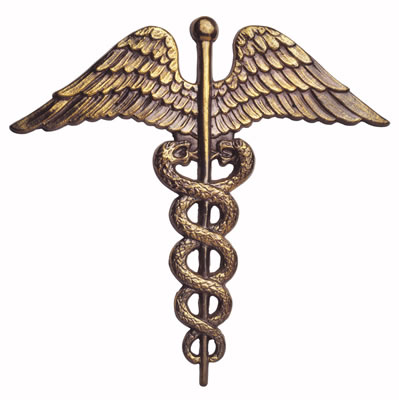|
This e-newsletter is sponsored by
|
|
Contact Us | |
American Society of
Bariatric Physicians
2821 S. Parker Road, Ste. 625
Aurora, CO 80014
office 303.770.2526 | asbp.org
Staff
Laurie Traetow, CPA
Executive Director
laurie@asbp.org
Karen Brenning
Office Manager &
Membership Coordinator
karen@asbp.org
Heidi Gordon
Director of Marketing &
Communications
heidi@asbp.org
Anna Hansen
Membership &
Exhibit Sales Manager
anna@asbp.org
Dana Mansell
CME Director &
Business Manager
dana@asbp.org
Stacy Schmidt, Ph.D.
Health Director
stacy@asbp.org |
|
|
|
Obesity Medicine e-Weekly |
|
News
 ABOM news about 2013 exam ABOM news about 2013 exam
The American Board of Obesity Medicine (ABOM) Executive Committee has voted in favor of implementing a one-week testing window. The 2013 examination window dates are now Dec. 7-14. The motivation for shortening the examination window is for the security of the examination questions. In evaluating other medical boards the available options for scheduling are shorter in duration rather than longer. The application deadline is Sept. 20, 2013. The examination fee is $1,750. The 2013 Policies & Procedures and application are posted online at www.abom.org.
 Medicare electronic prescribing requirements hardship application deadline extended Medicare electronic prescribing requirements hardship application deadline extendedThe Centers for Medicare & Medicaid Services is required by law to reduce Medicare rates for eligible health care professionals who do not meet e-prescribing reporting requirements. Many doctors have seen their Medicare pay reduced by 1 percent in 2012 because they did not report at least 10 electronic orders for medications within a 6-month reporting period in 2011. Physicians reporting at least 25 e-prescribing encounters earned a bonus equal to 1 percent of their Medicare charges in 2011. Doctors now have until Jan. 31, 2013, to file a hardship application. Click here to learn more. Allergan seeks buyer for Lap-Band
Click here to read an Oct. 30 article in The New York Times that discusses Allergan's plans for the future of Lap-Band.
 Study shows physicians' bias against overweight patients similar to general public's Study shows physicians' bias against overweight patients similar to general public'sClick here to read a Nov. 7 article from MyHealthNewsDaily.com that reports on a weight-bias study funded by Project Implicit, a nonprofit organization that examines unspoken biases. Read the complete study, titled, "Implicit and explicit anti-fat bias among a large sample of medical doctors by BMI, race/ethnicity and gender," online in the Nov. 7 issue of the peer-reviewed, open-access journal, PLoS ONE.
 ASBP member's weight management article published ASBP member's weight management article published
 Look AHEAD trial haulted Look AHEAD trial haultedThe primary objective of the Look AHEAD (Action for Health in Diabetes) trial was to examine, in overweight volunteers with type 2 diabetes, the long-term effects of an intensive lifestyle intervention program designed to achieve and maintain weight loss by decreased caloric intake and increased physical activity. This program was compared to a control condition involving a program of diabetes support and education. The main hypothesis was that the incidence rate of the occurrence of one of the primary outcomes (cardiovascular death (including fatal myocardial infarction and stroke), non-fatal myocardial infarction, hospitalized angina and non-fatal stroke), over a planned follow-up period of up to 13.5 years will be reduced among participants assigned to the lifestyle intervention compared to those assigned to the control condition. This intervention was recently stopped early, as preliminary analysis revealed that there was little chance that the lifestyle intervention would differ from the control group in cardiovascular events, despite the weight loss and other health benefits that the intervention produced. Click here to read a news release about this from National Institutes of Health. Click here to read more about this trial from the Nov. 7 issue of USA Today |
|
Resources
Obesity Updates: Click titles to view articles
Effect of reducing screen time on childhood obesity
Screen time, whether it is in front of a television, computer or video game console, has been linked to children having problems with language development, behavior and obesity. Researchers looking for ways to prevent childhood obesity decided to focus on preschoolers since parents have control over kids' feeding and activity at that age. This study randomly assigned 160 families to two groups. One received a short counseling session on the impact of screen time - time watching television, DVDs, videos or playing computer and video games - with tips to decrease it. Those in the control group received information about internet safety. After a year, there was no difference in screen time between the two groups; however, the number of meals in front of the TV fell to about 1.6 in the counseling group compared with 1.9 meals in the control group. The authors conclude that programs to reduce screen time and prevent obesity should carefully consider what behaviors to target, and how to format the intervention.
Lipidema clinical manifestations, diagnosis, and treatment
Lipidema is characterized by symmetrical swelling, pain and frequent hematomas in the lower limbs and mainly affects women. This condition is an often misdiagnosed, as many patients are stigmatized as simply being "obese." Nevertheless, it is very common and has an immense psychological impact. This review article examined the literature about the diagnosis and treatment of lipidema.
Telemedicine for pediatric obesity treatment in rural areas
Pediatric obesity is a more prevalent in rural areas, and there are often few obesity treatment programs available in rural areas. Telemedicine may be a reasonable way to reach geographically isolated families. This review article explores the use of telemedicine in pediatric obesity treatment and describes one tertiary-care pediatric obesity telemedicine program. The authors support telemedicine as a potentially effective mode for delivering treatment.
|
|
Advocacy
Election issue of Potomac Currents Analysis available
The election issue of Potomac Currents Analysis, a newsletter from the Society's advocacy advisor, is now available for download. This issue includes 2012 election results and an update of state Essential Health Benefits (EHB) benchmark plan submissions and whether these plans cover bariatric surgery and weight-loss programs. |
|
|
|
|